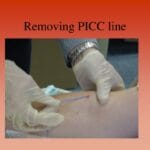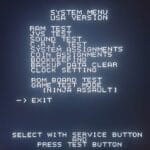Ready to elevate your healthcare career? The Certified Sterile Processing and Distribution Technician (CSPDT) certification validates your expertise in a crucial area of patient safety. This comprehensive guide navigates you through every step, from understanding the certification’s value to acing the exam and advancing your career.
Understanding CSPDT Certification
What exactly is CSPDT certification? It signifies that a technician possesses the knowledge and skills to meticulously clean, sterilize, and distribute medical instruments, playing a vital role in infection prevention. This certification, awarded by the Certification Board for Sterile Processing and Distribution (CBSPD), a nationally accredited organization by the National Commission for Certifying Agencies (NCCA), demonstrates a commitment to patient well-being and high-quality care.
Why is CSPDT Certification Important?
This certification is essential for several reasons:
- Patient Safety: Properly sterilized instruments are crucial for preventing infections and ensuring positive patient outcomes.
- Professional Recognition: The CSPDT credential distinguishes you as a qualified and dedicated professional in the field.
- Career Advancement: Many employers prefer or require CSPDT certification for sterile processing roles, opening doors to greater opportunities.
Deciphering the CBSPD Exam
The CBSPD exam rigorously assesses your comprehension of sterile processing principles and practices. Here’s what you need to know:
Eligibility Requirements
Before embarking on your certification journey, confirm you meet the CBSPD’s specific eligibility requirements, which may include a combination of education and work experience. Refer to the CBSPD Candidate Handbook for the most up-to-date details.
Exam Content
The exam comprehensively covers various aspects of sterile processing, including:
- Decontamination: Principles, methods, and safety protocols for cleaning and disinfecting instruments.
- Sterilization: Different sterilization techniques (e.g., steam, gas plasma), quality control measures, and equipment operation.
- Instrument Distribution: Proper handling, storage, and delivery of sterile instruments.
- Regulations and Standards: Compliance with industry regulations and best practices.
Exam Format and Logistics
The CSPDT exam typically involves multiple-choice questions, and some practical components may be involved. It usually lasts around three hours. The CBSPD website provides details on testing locations and dates, as well as the current exam fees.
Charting Your Path to CSPDT Certification
This step-by-step guide simplifies the certification process:
- Verify Eligibility: Carefully review the CBSPD’s eligibility criteria.
- Apply for the Exam: Complete the application on the CBSPD website and submit the required fees.
- Schedule Your Exam: Choose a convenient date and location from the available options.
- Prepare Diligently: Utilize a combination of study resources, such as practice tests, study guides, and online forums. Consider joining a study group to collaborate with peers.
- Conquer the Exam: Arrive early, stay calm, and apply your knowledge strategically.
- Maintain Your Certification: Fulfill continuing education requirements (currently 100 CEUs every five years) to stay current with evolving industry standards and best practices.
Preparing for Exam Success: Strategies and Resources
Thorough preparation maximizes your chances of success. Here are some valuable tips:
- Practice Regularly: Utilize practice tests to familiarize yourself with the exam format and identify areas needing further study. Several free and paid practice tests are available online.
- Consult the CBSPD Candidate Handbook: This essential resource offers invaluable information about the exam content, procedures, and policies.
- Engage with Study Groups: Collaborate with other aspiring CSPDTs to share study tips and support each other.
Comparing CSPDT and CRCST: Which is Right for You?
While both the CSPDT and the Certified Registered Central Service Technician (CRCST) certifications demonstrate competency in sterile processing, there are key distinctions:
- CSPDT (CBSPD): Encompasses a broader scope, including distribution, and is widely recognized in the healthcare industry.
- CRCST (IAHCSMM): Serves as a solid entry-level certification, focusing on the foundational principles of sterile processing. It is granted by the International Association of Healthcare Central Service Materiel Management (IAHCSMM).
Your choice depends on your career goals and level of experience. If you’re just starting out, the CRCST might be a more appropriate first step. If you seek a more comprehensive certification or already have some experience, the CSPDT may be more suitable.
Reaping the Rewards: Career Benefits of CSPDT Certification
CSPDT certification can significantly enhance your career prospects:
- Expanded Job Opportunities: Certified technicians are highly sought after in various healthcare settings, including hospitals, clinics, and surgery centers.
- Increased Earning Potential: Certification often translates to higher salaries, reflecting your specialized skills and knowledge. Research suggests a notable salary increase for certified professionals.
- Advancement Opportunities: The CSPDT credential can pave the way for leadership roles and specialized positions within sterile processing departments.
The Future of Sterile Processing: Emerging Trends and Technologies
The field of sterile processing is constantly evolving, with new technologies and techniques emerging. Staying informed about these advancements is crucial for maintaining competency and providing the highest quality care. This ongoing professional development demonstrates a commitment to excellence and patient safety.
Conclusion: Invest in Your Future with CSPDT Certification
Earning your CSPDT certification is a significant investment in your career. It not only validates your expertise but also opens doors to exciting opportunities in a rapidly growing healthcare field. Embrace the challenge, prepare diligently, and embark on a rewarding journey in sterile processing.
Looking to learn about the billing codes associated with cystoscopy? Check out our comprehensive guide on cystoscopy cpt code. And for those interested in cystourethroscopy, we’ve got you covered with our detailed article on cystourethroscopy cpt code.
- Senior at What Age: Benefits & Eligibility Guide - March 29, 2025
- Unlocking Senior Benefits: How Old is a Senior? Your Complete Guide - March 29, 2025
- Master Russian Politeness:A Guide to Saying Please - March 29, 2025
















